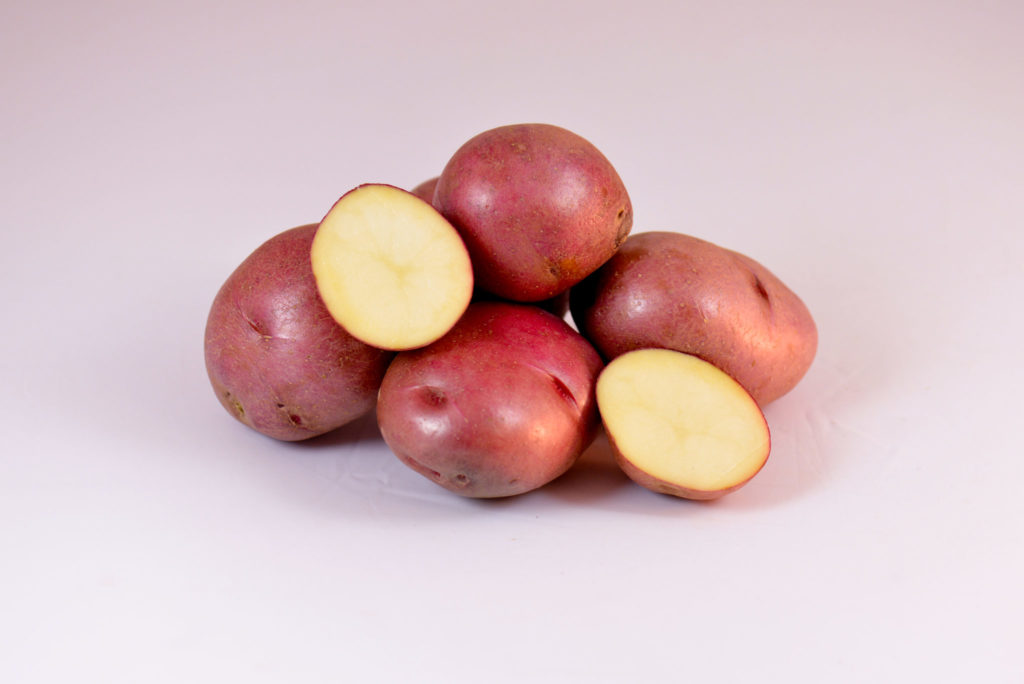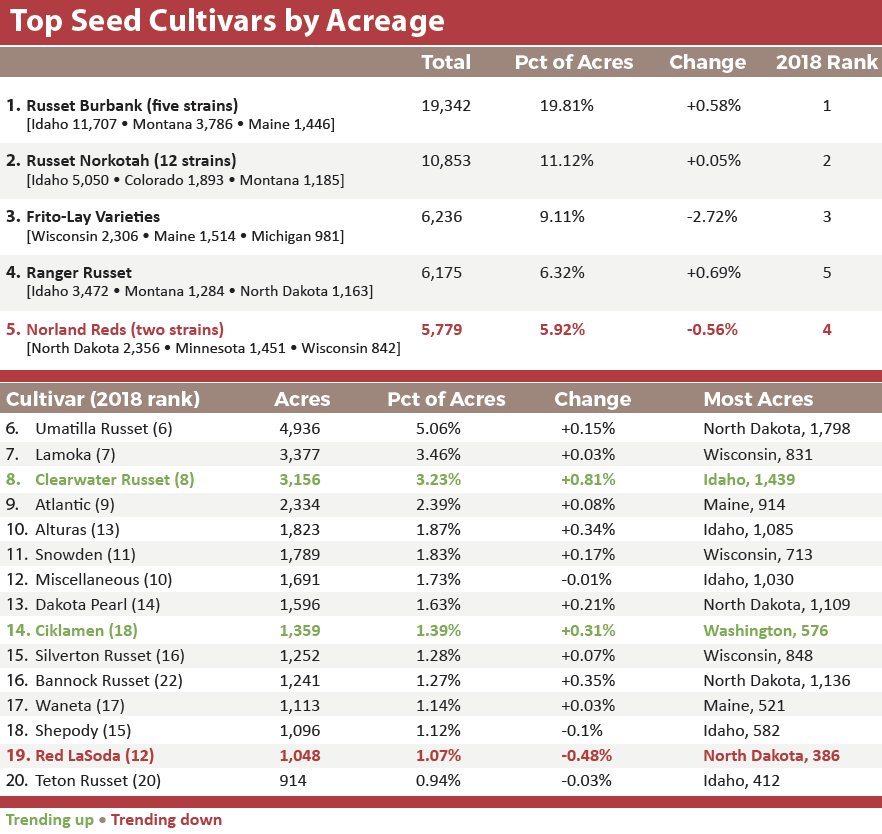
Breaking down 2019 seed potato acreage
U.S. acres devoted to growing certified Ciklamen potato seed have steadily increased over the past decade.
With just 62 acres in 2010, Ciklamen growth has increased every year since and reached 1,359 acres in 2019. That makes it the 14th-most-grown variety of certified seed grown in the U.S. and second-most-prominent red potato behind the Norland strains.
Ciklamen (top photo, courtesy of Greg Ebe) was created by accomplished German potato-breeding company Asche-Saatzucht, which translates to “Ash Seed.” The cultivar has high resistance to most common diseases, including PVY, blackleg and leaf roll virus, according to Leibniz Institute of Plant Genetics and Crop Plant Research (IPK).
Among U.S. seed growers, Greg Ebe of Ferndale, Washington, has as much experience with Ciklamen as anyone. Washington seed acres devoted to Ciklamen are the highest of any state the country at 576, and most belong to Ebe.
“I’ve been growing them for about 12 or 13 years,” Ebe said. “Usually around 500 acres, although I have decreased a little.”
Ebe was a bit more tepid in his assessment of Ciklamen’s disease resistance than IPK, calling PVY resistance “pretty good” and common scab “moderate.” Overall, Ebe said Ciklamen is a productive plant and a good one for the red creamer market.
“It’s got a nice, dark red skin with a smooth finish. It’s actually got a double skin,” Ebe said. “It sets a lot of tubers and has high dormancy. It is a longer season, especially for the A market.”
Manistee
Another steady riser in recent years is Manistee, a cultivar developed by Michigan State University with the chipping industry in mind. Manistee’s parentage includes Snowden.

Manistee seed acres totaled 791 this year. Like Ciklamen, certified seed acreage for Manistee has increased every year this decade. Fewer than 200 acres were planted as recently as 2015.
Iott Seed Farms in Kalkaska, Michigan, was one of the earliest commercial seed farmers to grow the variety. Dennis Iott said his family has been planting them for eight years and grew about 150 acres in 2019.
“They’re similar to Snowden,” Iott said. “The solids of Manistee are a weakness, they could be better. The main strength of the variety is that it stores very well and chips fairly late.
“They’re kind of funny shaped, almost like bagels. They have a really deep stem.”
97,629 acres of certified seed #potatoes were planted in the US last year. Russets Burbanks and Norkotahs account for about 30%, but there are hundreds of varieties. Here are some risers and fallers. pic.twitter.com/12wwm0Aynf
— Spudman Magazine (@SpudmanMag) January 28, 2020
On the russet front
Russet Burbank was once again the most dominant variety with just shy of 20% of total certified seed acres.

In fact, four russet industry staples — Burbank, Norkotah, Ranger and Umatilla — accounted for more than 42% of all seed acreage in 2019.
Clearwater russets topped 3,000 seed acres this year for the first time. Ivory russet, which was approved by McDonald’s for french fries in 2016 at the same time as Clearwater, nearly tripled in acreage to 187.
Another russet gaining acreage is the Caribou variety, up to 783 acres from 448 last year. Caribou, developed by Greg Porter of the University of Maine’s potato breeding program, was praised for its culinary quality and uniformity by Maine Potato Board and Maine Seed Potato Board Executive Director Don Flannery.
“They are all almost exactly the same, and you just don’t see that often,” Flannery said. “They taste great. We got lucky with that one.”








